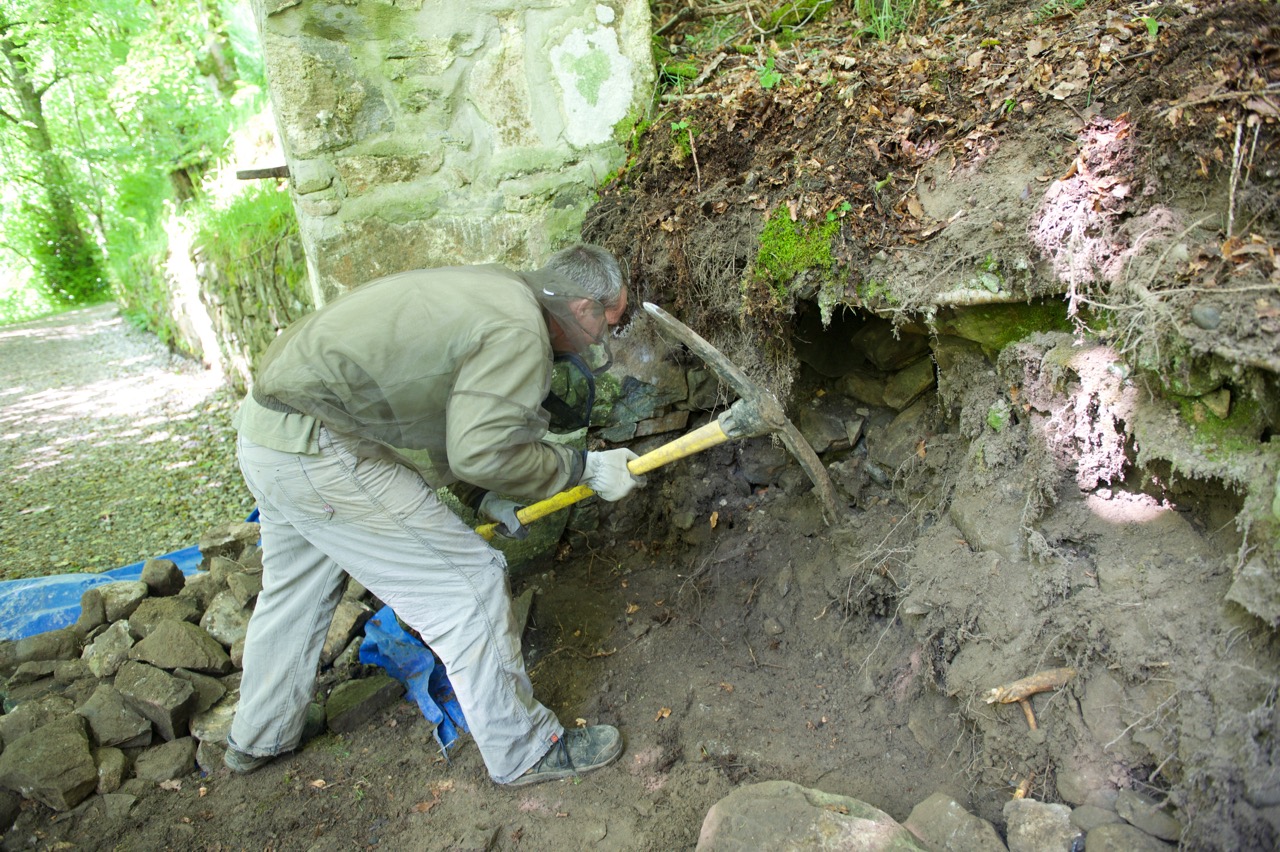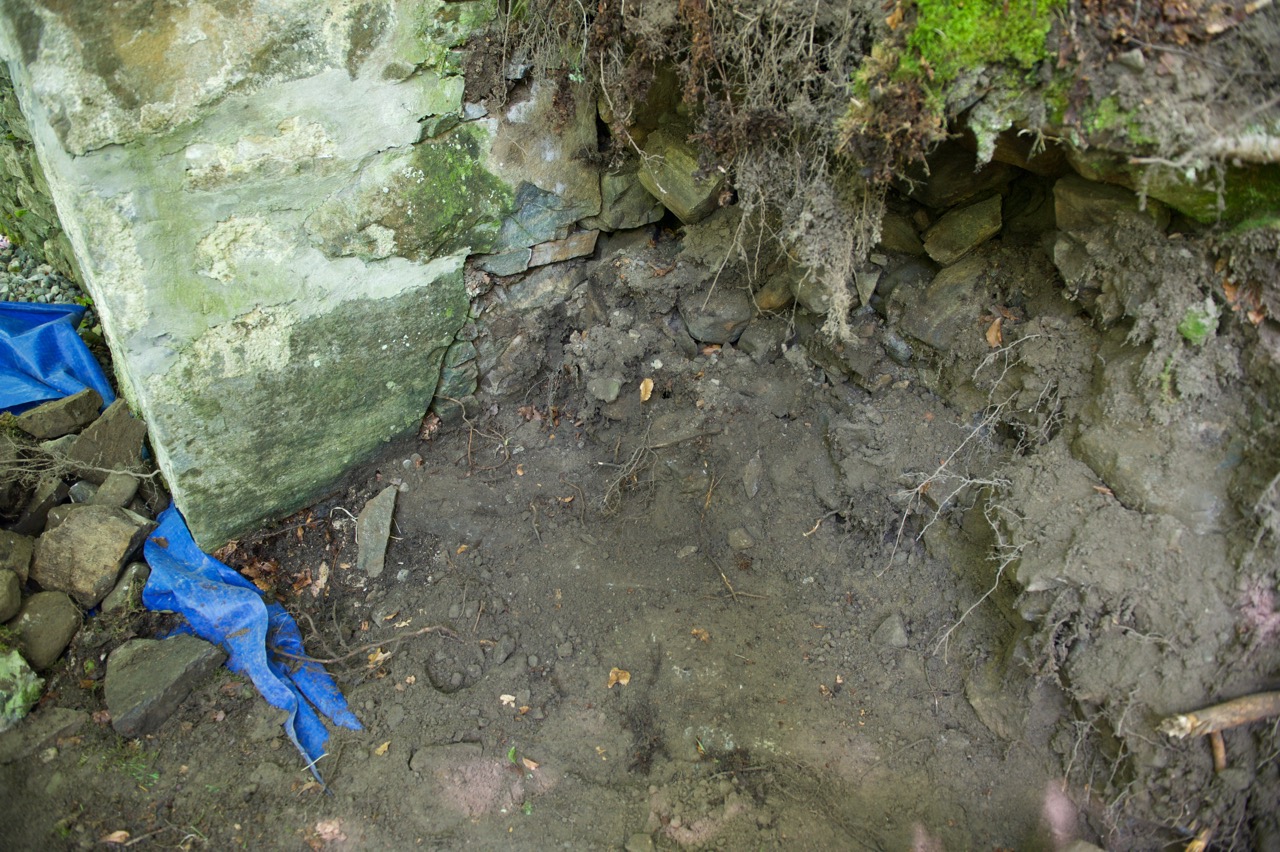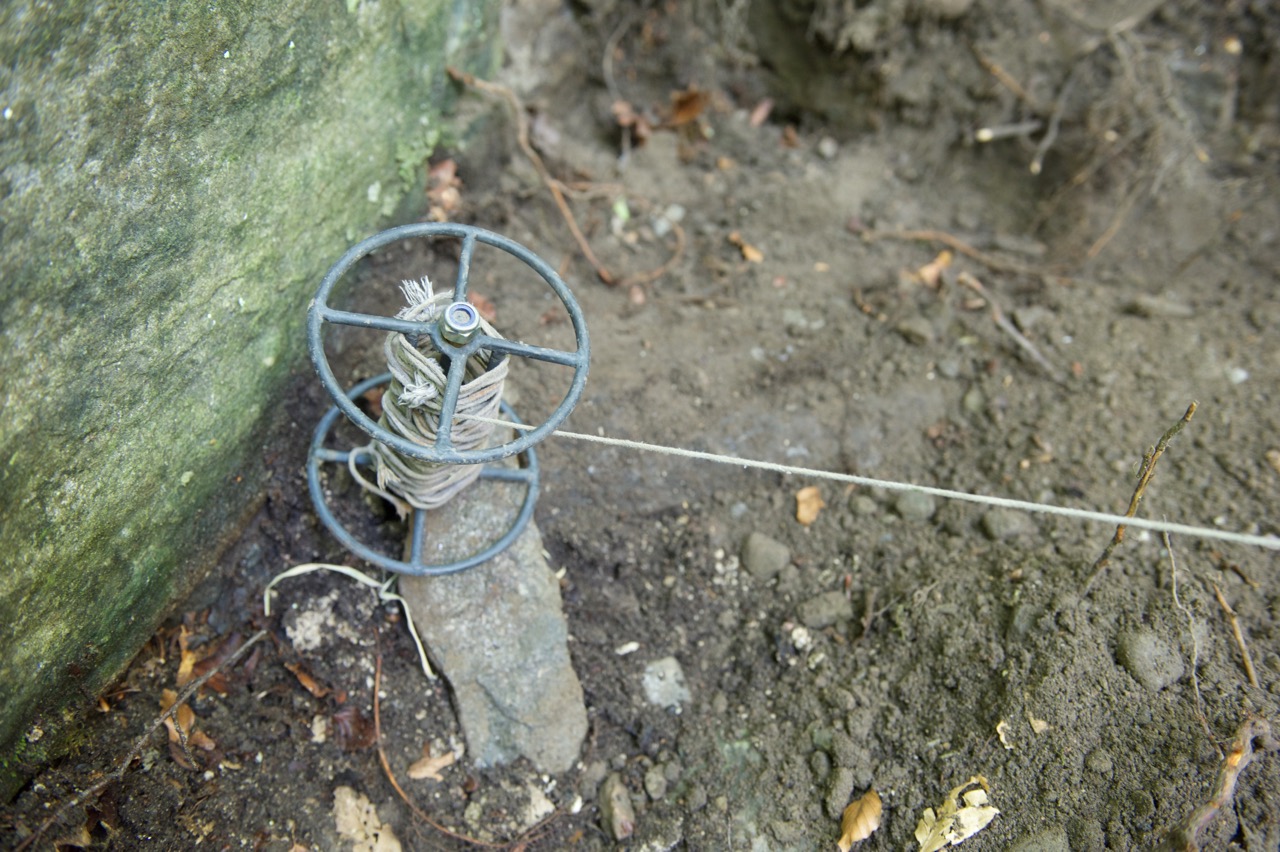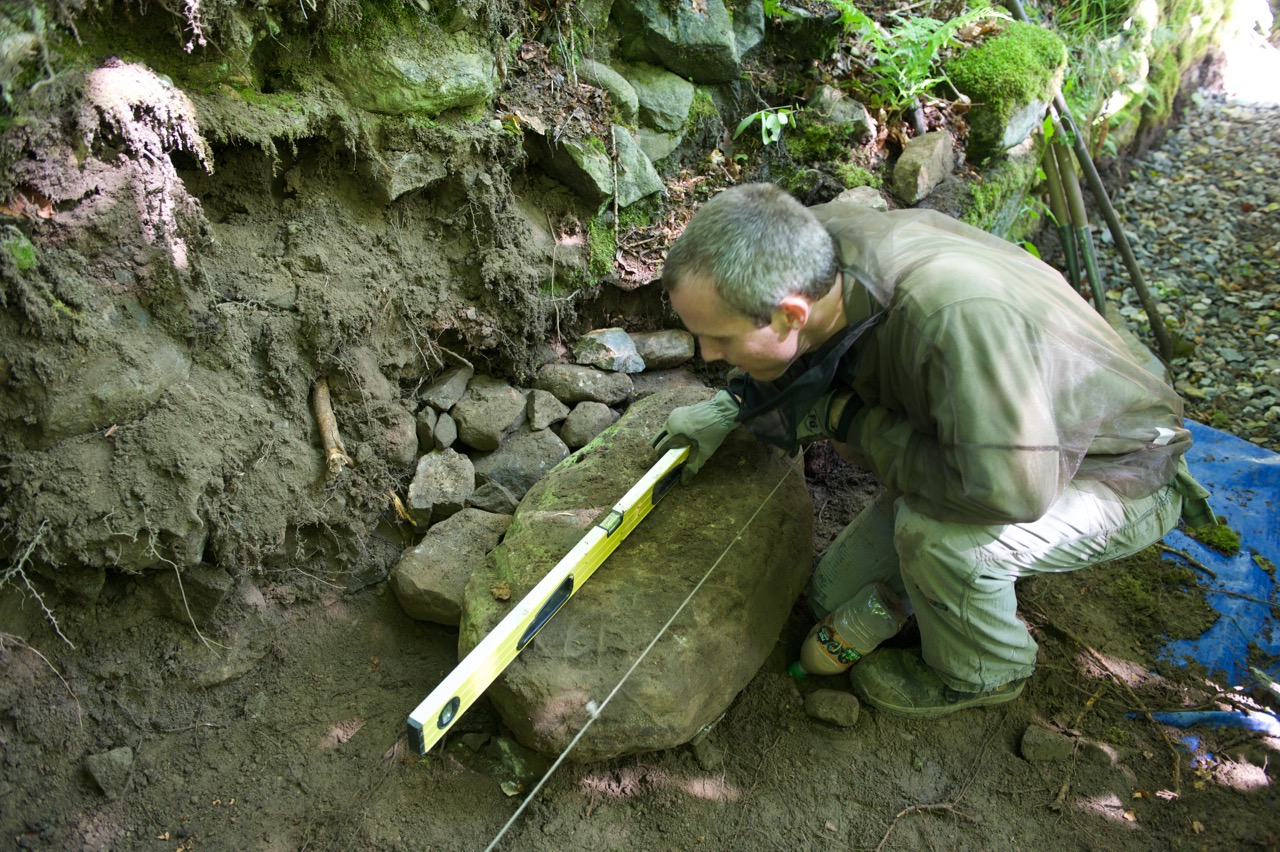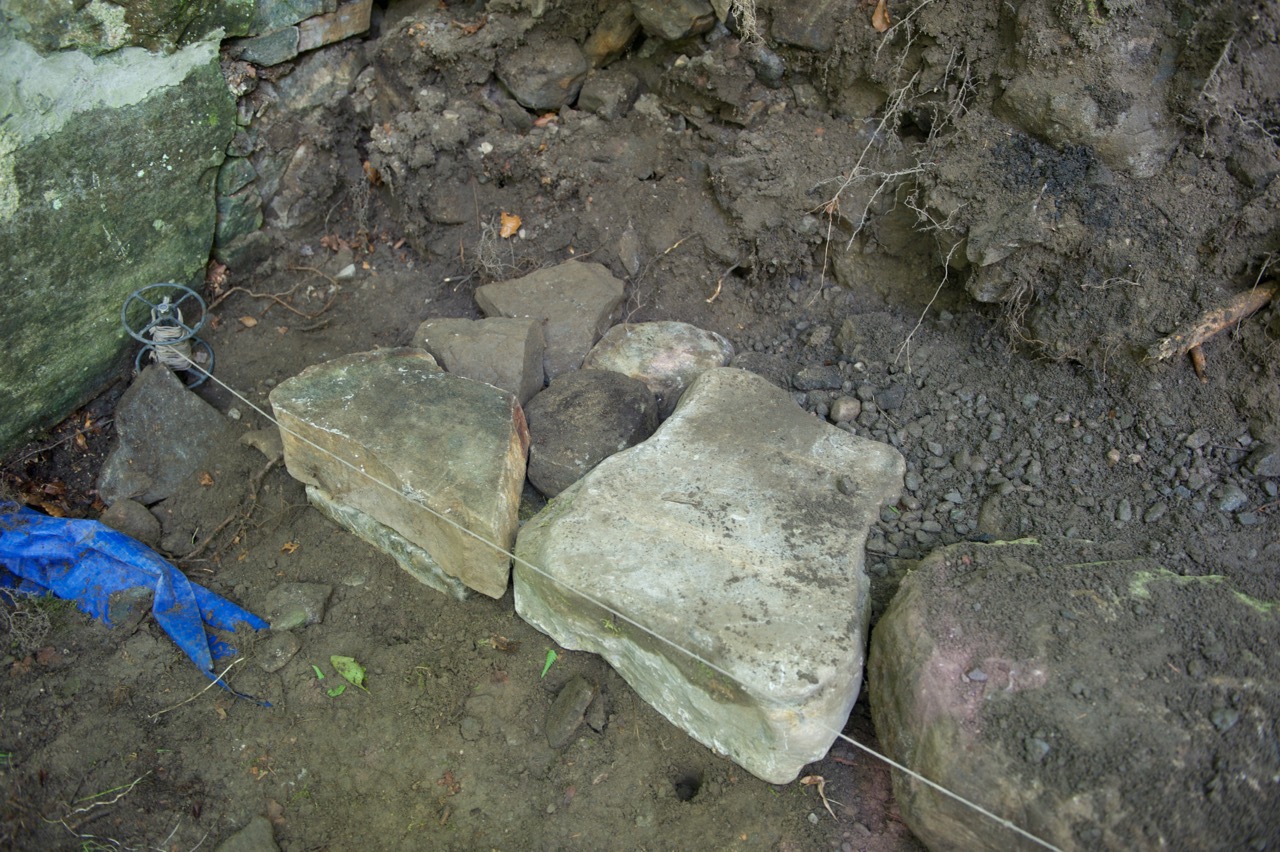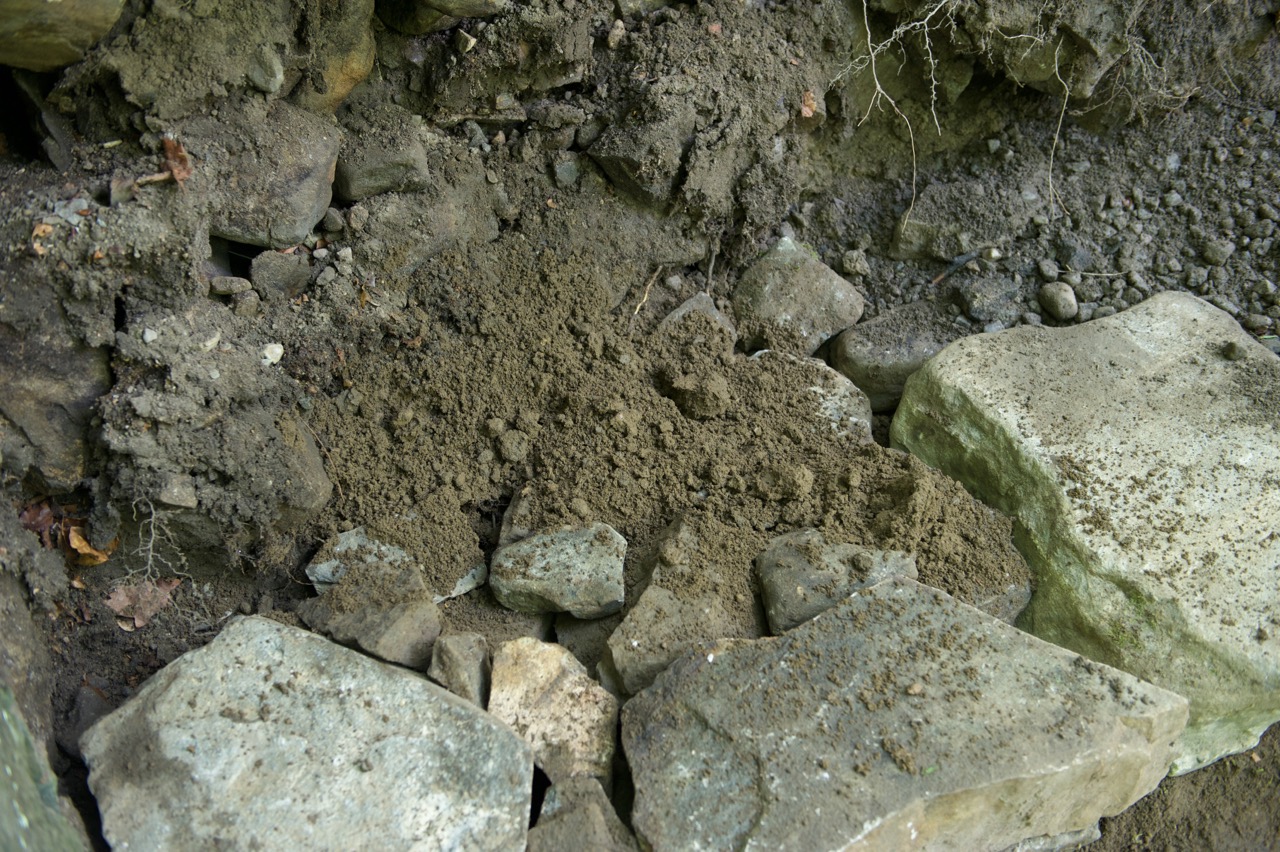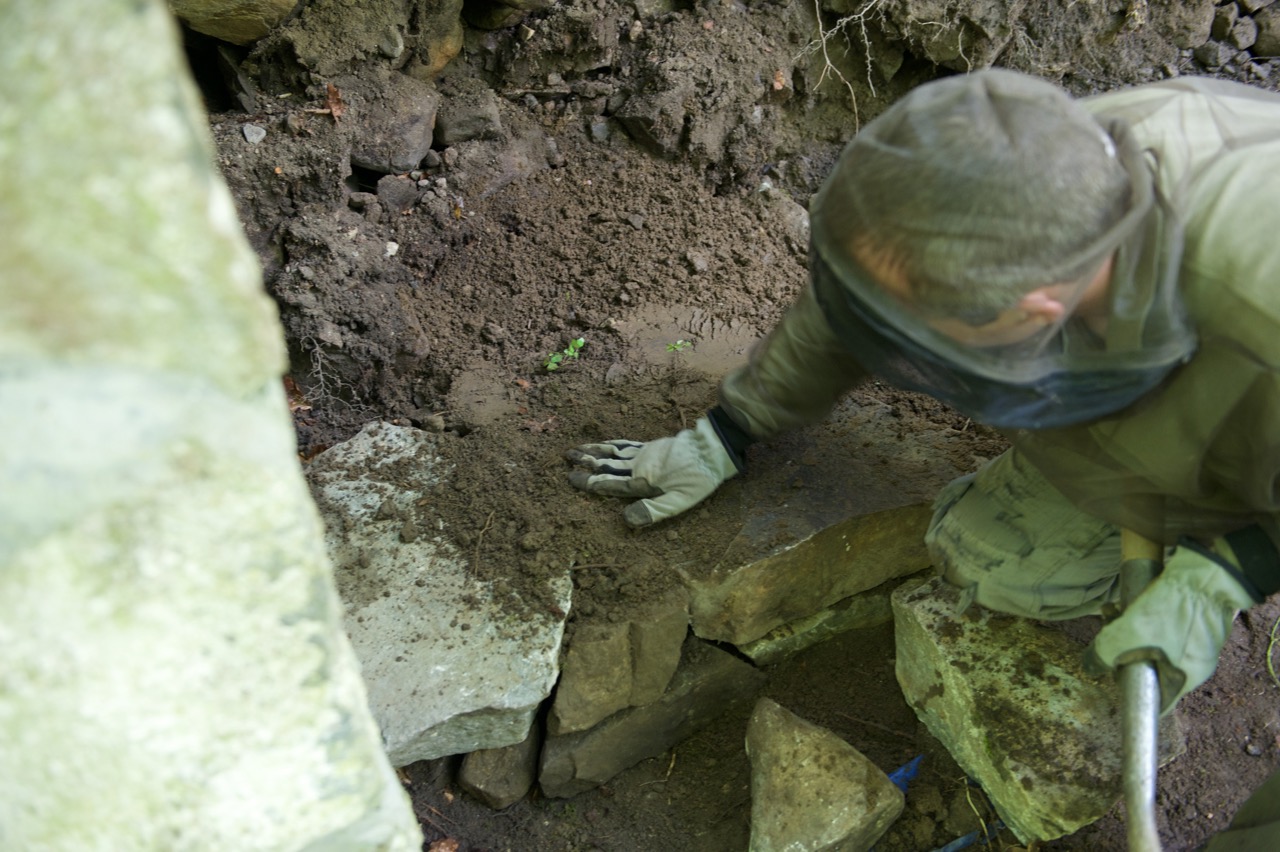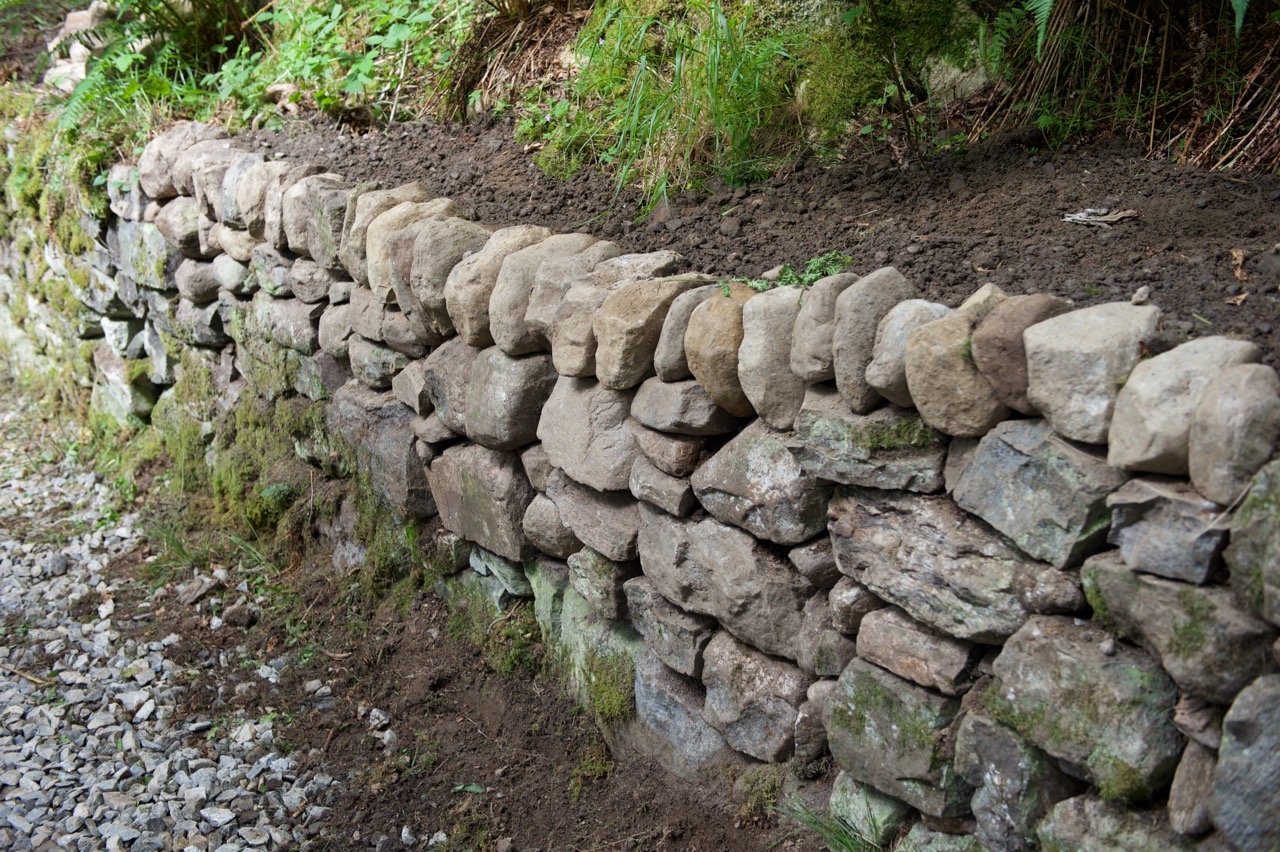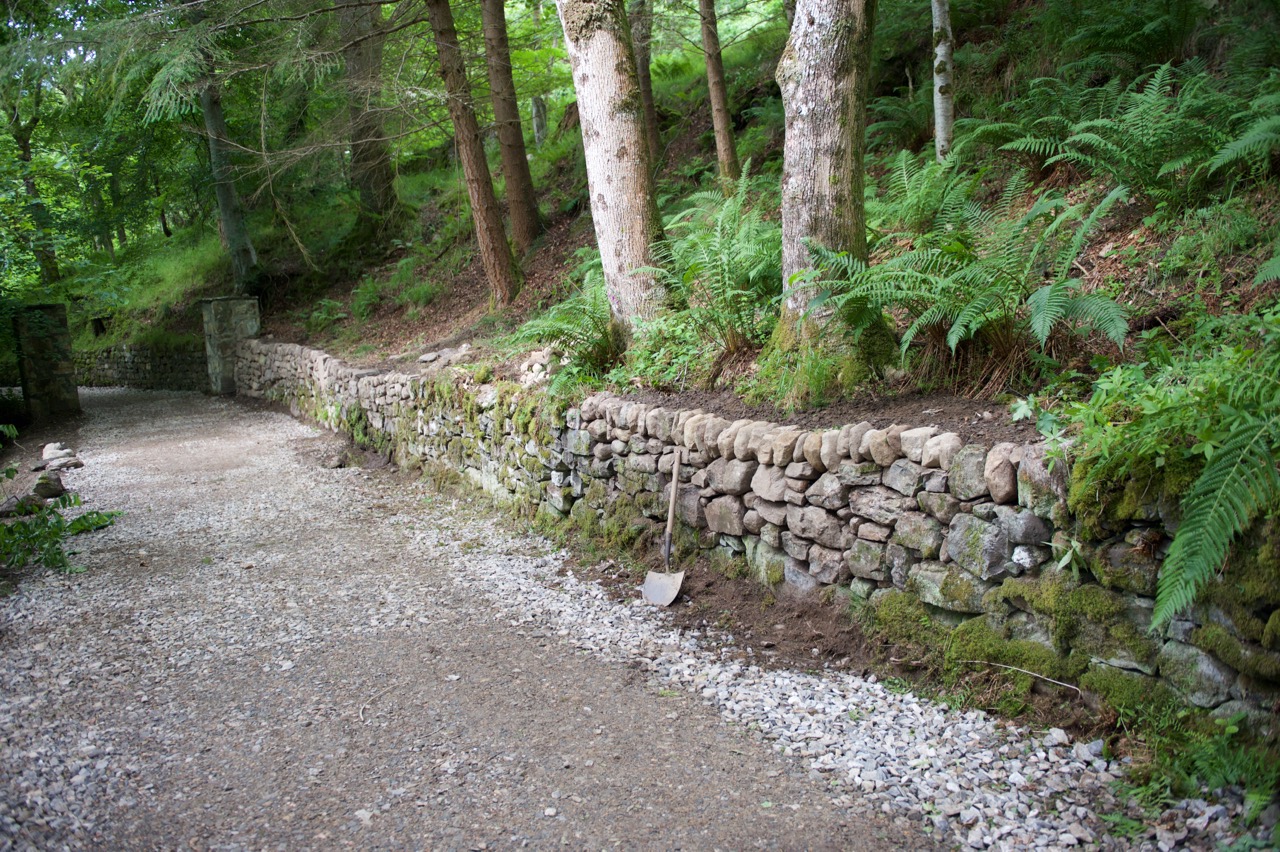
This post will show you how to build a stone wall using a traditional method which doesn’t require any mortar or cement. I learned this ancient technique on a recent trip to the Scottish highlands, where I spent several weeks rebuilding walls and maintaining the land. Stone walls dot Scotland’s countryside and can remain standing for hundreds of years. They are often seen alone in fields, as seen in the picture above, but can also be used as a retaining wall. For example, the retaining wall shown below was built to keep the hillside from collapsing onto the grass.

A retaining wall is also often used when a road is made on a hill. The photo below shows the wall I am going to be working on. After the road was carved out of the hillside stone the retaining wall was build to keep the hill from collapsing into the roadway. This wall was constructed nearly 300 years ago, and while the section shown in the photo below is still in great condition, other sections were deteriorating. A friend and I were tasked with rebuilding a section of this wall that was slowly crumbling away.

Over the course of several weeks my friend and I rebuilt the deteriorating section, which spanned about 100′. The construction of the first 8′ is shown in this post to demonstrate the process.
It should be noted that this technique should not be used to build structural or load-bearing walls. If the wall needs to support weight, mortar or cement should be used so the wall doesn’t collapse. That said, these mortarless walls are best suited for retaining walls, freestanding barriers, and ornamental applications.
SAFETY NOTE: Rocks are heavy and very hard. Wear long pants, long sleeves, and gloves to protect yourself, and be mindful of your back when picking up heavy stones. Lift with your knees!



